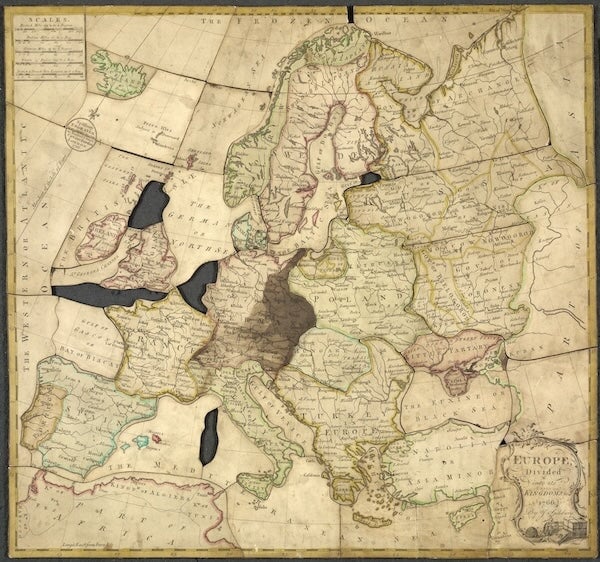A Short History of Jigsaw Puzzles

Image taken from Europe divided into its kingdoms &c. by J. SpilsburyOriginally published/produced in London, 1766.Held and digitised by the British Library, and uploaded to Flickr Commons
Who Invented Jigsaw Puzzles?
The history of jigsaw puzzles dates back to the 18th century. The first jigsaw puzzles were created by John Spilsbury, a London mapmaker and engraver, in 1767. Spilsbury's initial puzzles were maps mounted on wood and cut into small pieces to teach geography. This educational tool quickly gained popularity and spread to other subjects, including history and literature.
The Evolution of Jigsaw Puzzles
18th Century: The origins of jigsaw puzzles can be traced back to Europe in the mid-18th century. They were initially created as educational tools for teaching geography. Craftsmen would mount maps onto wood and then cut them into small pieces using a jigsaw, hence the name "jigsaw puzzle."
19th Century: Jigsaw puzzles gained popularity throughout the 19th century, particularly in England and the United States. They were still primarily used for educational purposes and were often made of wood. These early puzzles were relatively expensive and were considered a pastime for the wealthy.
20th Century: In the early 20th century, advancements in printing technology made jigsaw puzzles more affordable and accessible to the general public. Cardboard puzzles became more common, featuring a wider range of subjects including landscapes, famous paintings, and scenes from popular culture.
Great Depression: During the Great Depression in the 1930s, jigsaw puzzles experienced a surge in popularity as a form of inexpensive entertainment. Families would gather around the dining table to work on puzzles together, providing a much-needed distraction from the economic hardship of the time.
Mid-20th Century: Jigsaw puzzles continued to be a popular pastime throughout the mid-20th century, with various companies producing puzzles featuring licensed images from movies, television shows, and comic strips.
Late 20th Century to Present: The popularity of jigsaw puzzles has endured into the 21st century, with new innovations such as 3D puzzles and puzzles with irregularly shaped pieces. Online jigsaw puzzle platforms have also become popular, allowing users to assemble virtual puzzles on their computers or mobile devices.
Today, jigsaw puzzles remain a beloved hobby for people of all ages, offering both relaxation and mental stimulation. They continue to evolve with advancements in technology and remain a timeless form of entertainment.





